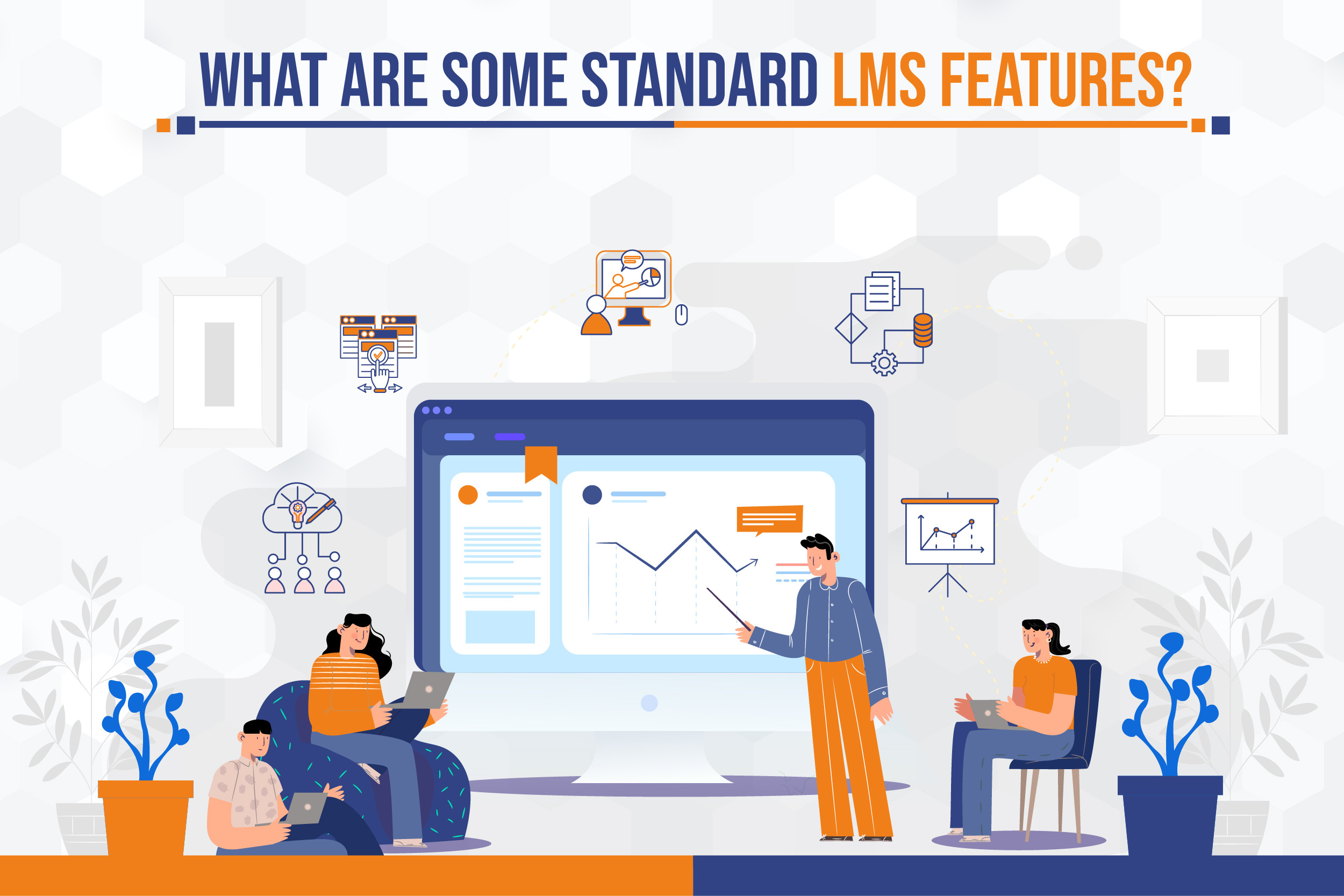
What Are Some Standard LMS Features?
SMBs and big corporations utilize LMS (Learning Management System), a very potent piece of software, to address a number of demands. eLearning course monetization includes everything from corporate training to client education. Businesses can train their staff, customers, and partners using LMSs. Training can be done synchronously using webinars and video teleconferencing tools like Zoom, or asynchronously using on-demand/self-paced content including documents, videos, pdfs, quizzes, and more.
There is no need to search any further if you're seeking a productive system to design, deliver, automate, and monitor users' progress during a training course. As compared to other stuff eLearning, LMSs are unbeatable, they increase training efficacy (internal and external), lower training costs, monetize eLearning courses, enhance cross-departmental collaboration, etc.
Essential LMS Features
1. Easy-to-use Interface For Admins And Learners
Nothing is more annoying than taking an online course that appears to have been created on a platform from the 1990s. An LMS is used to optimize and simplify eLearning for all types of businesses. Every successful Learning Management System should also include a few built-in features, such as the ability for learners to seamlessly pick up where they left off on incomplete courses.
2. Integrations
Some popular forms of integration include:
- Web analytics, such as Facebook Pixel and Google Analytics, for tracking data and gauging the efficacy of marketing campaigns
- CRM systems, such as HubSpot and Salesforce, for enhancing customer interactions and increasing revenue.
- Giving developers the freedom to create anything they want with the data from an LMS through the use of APIs and developer access.
3. Issue Certificates on Completion Of A Course
After finishing a course, users should be able to get certificates from all LMSs. The majority of eLearning certificates include a date of issuance and expiration, the instructor's or company's name, and the name of the learner who obtained the certificate. Furthermore, you have to pick an LMS that enables you to alter your certificates to fit your brand's colors and other aesthetic preferences.
4. Course Development
Although it would appear that all LMS programs would include this feature, the simplest definition of an LMS excludes a course development module. Some choices demand that you supply your own material, so you'll need to create films and other stuff in a different system and import it into the software. Your procedures will be more efficient if you choose an LMS with course authoring options.
5. mLearning
It's astounding that some people don't have computers at home, yet mobile-ready learning offers a useful workaround for this problem. Learners may take part in training from any place using any device they already own when your LMS has mobile capabilities, such as responsive design or native mobile apps. This is especially useful for distant teams where learning may take place in between conversations or visits or for certifications that call for learning outside of the working day.
6. Asynchronous Learning
The opportunity for learners to do coursework at their own speed, or asynchronous learning, is one of the finest advantages for enhancing engagement and memory retention. This implies that individuals are not required to show up for a class or to meet with a trainer at a specific time. It helps to encourage buy-in and enhance return by integrating videos, online readings, messaging, and question-and-answer forums where learners may interact with the subject at their own speed and convenience.
7. Gamification
Gamification tools may make learning competitive in a fun way. It can make your subject matter more fascinating. As a result, including gaming aspects in your training programs and courses will engage students, help them go through the modules more quickly, and boost compliance.
8. Visual Conferences
Learners who want individualized attention or have challenging queries may value a Learning Management System with video conferencing capabilities. While email and message boards may be sufficient for the majority of your communication requirements, video conferencing enables you to conduct challenging conversations. Your business will value the fact that you can speak with your trainees face-to-face without paying for an outside membership.
9. Message Boards For Social Learning
Your LMS should have tools that enable your trainees to share knowledge with one another. This helps to improve learning and is a wonderful method to make it easier for your trainers. Your learners may post questions and receive responses in a forum environment by integrating message boards and social learning tools. Let your pupils instruct one another since teaching is the finest method to demonstrate your grasp of a subject. This way even complex Leadership and Management Courses can be easily absorbed by all learners.
Translations And Localization
The process of localizing involves translating academic content into a foreign language. Because every firm has distinct goals and a different business strategy, it's crucial to take into account the internal utility of this function and make it understandable for the learners.
Final Words
The process of selecting the ideal LMS for your business takes time. Use this article to evaluate what features your LMS requires after first discussing your eLearning objectives with your team. It's crucial to note that finding a platform that enables your business to easily develop, deliver, and monitor your training programs should be your first focus.
